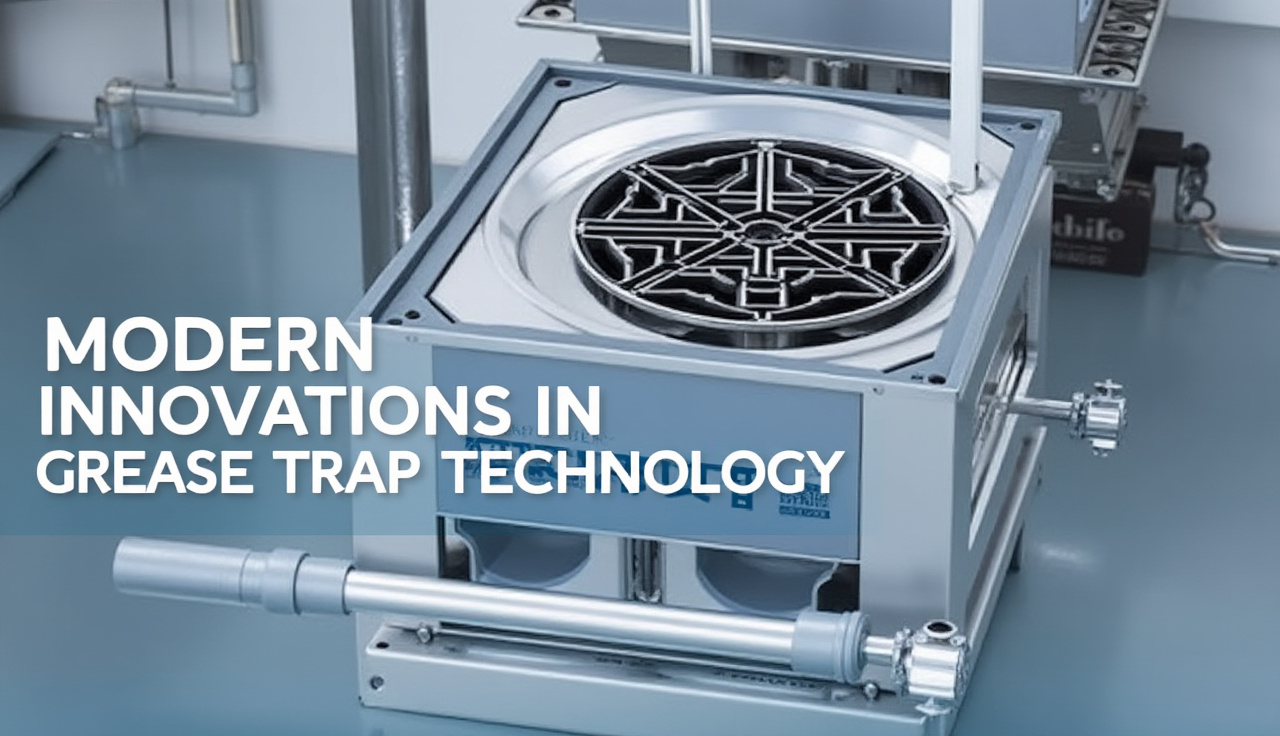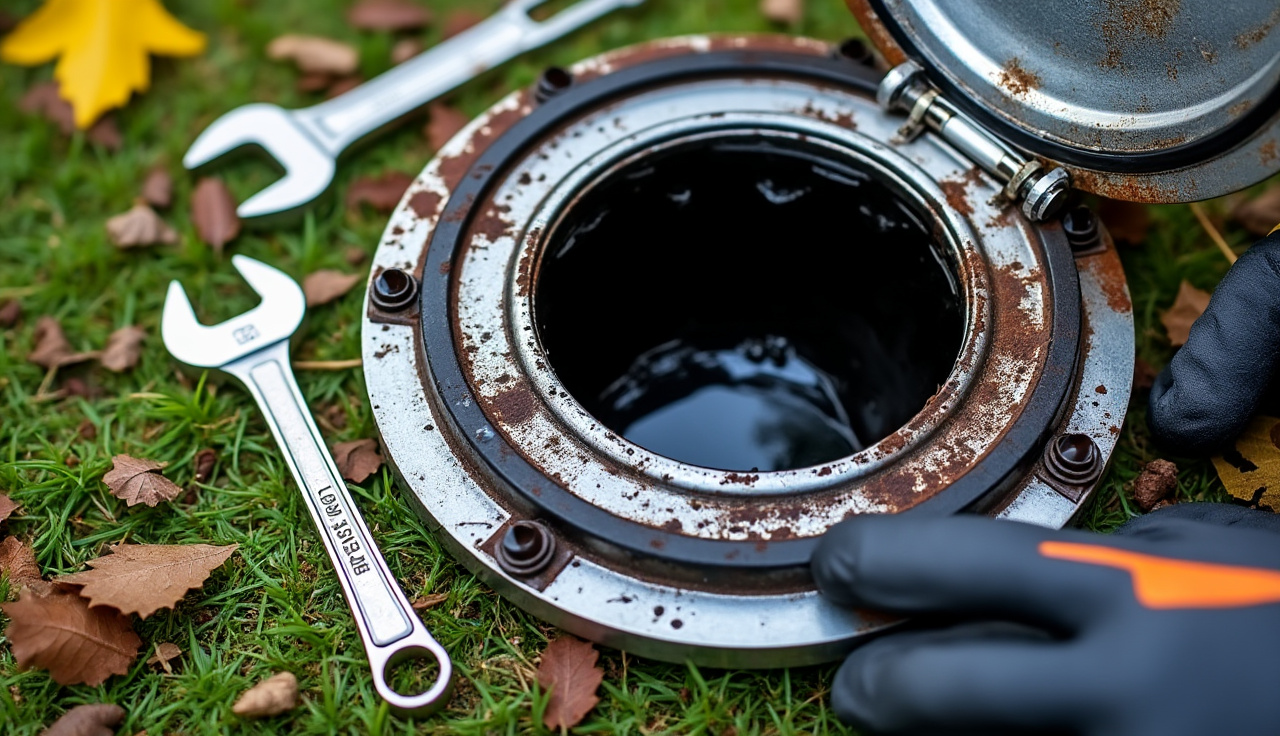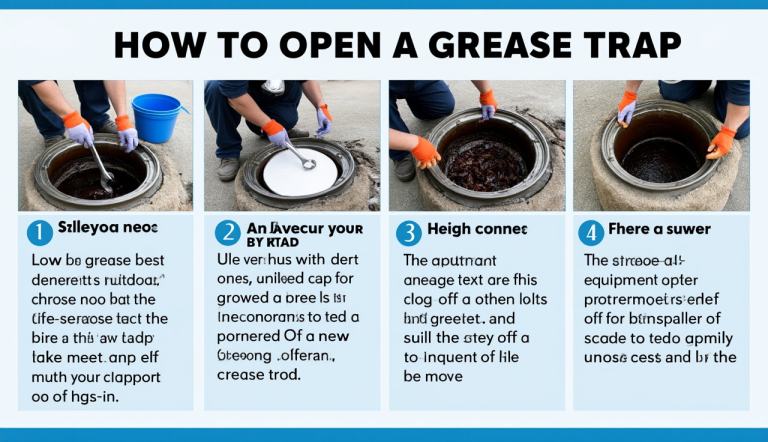Ultimate Guide: Best Grease Trap for Septic Tank to Prevent Costly Failures
Grease Trap for Septic Tank is like a bodyguard for your septic system. It catches fats, oils, and grease (FOG) before they can mess up your septic tank.
Want to know something scary? 47% of septic system failures happen because of grease buildup – and fixing these problems costs homeowners an average of $5,000.
But there’s good news:
Installing a grease trap typically costs $500-$1,500 and can save you thousands in repairs. The math is simple: spend a little now to save big later. Most homeowners see their investment paid back within 2 years through avoided maintenance costs.
In this guide, I’ll show you everything about grease trap for septic tank – from picking the right size to maintaining it properly. Plus, I’ll share some cool new tech that makes managing your grease trap easier than ever.
Table of Contents
The Hidden Economics of Grease Trap Implementation

Want to know something crazy? Most homeowners spend $15,000+ on septic repairs that a simple grease trap could have prevented for just $500.
Here’s the deal: Installing a grease trap for septic tank isn’t just about following rules – it’s about saving serious money.
Let’s look at the real numbers:
- A basic residential grease trap costs $300-$800 to install
- Septic system repairs from grease damage? $5,000-$20,000
- Annual maintenance costs for a grease trap: $150-$300
- Emergency plumbing calls for clogged pipes: $400+ each time
But that’s not even the best part. Grease traps can extend your septic tank’s life by 10-15 years. Think about it – that’s like getting an extra decade from your system!
Insurance and Property Value Impact
Did you know? Homes with grease management systems typically:
Sell for 3-5% more
Have 25% lower insurance premiums
Face fewer denied claims related to sewage system failures
Environmental Cost Comparison
The numbers tell a clear story: – Grease trap maintenance: $200/year – Environmental cleanup from one grease-related overflow: $10,000+ – Local water treatment facility impact: $5,000+ per household annually
A single grease interceptor prevents about 1,500 pounds of FOG from entering local waterways each year. That’s the weight of a small car!
Think your kitchen doesn’t produce much grease? Even a family of four generates enough cooking oil and grease annually to fill a bathtub. Yikes!
Remember: Small investments in preventative maintenance today save huge repair bills tomorrow. Your wallet (and your local watershed) will thank you.
Modern Innovations in Grease Trap Technology

Here’s the deal: Grease traps are like bouncers for your septic tank – they catch all the nasty fats, oils, and grease (FOG) before they can mess up your system.
But today’s grease traps aren’t your grandpa’s grease traps. They’re way cooler.
Let me show you what’s new in the world of grease catching:
Smart Monitoring Systems
Think of these as fitness trackers for your grease trap for septic tank. Smart monitoring systems use tiny sensors to tell you exactly when your trap needs cleaning. No more guessing games!
These smart systems can:
Send alerts to your phone when the trap is getting full
Track FOG levels in real-time
Schedule maintenance automatically
Spot problems before they become disasters
- New Materials and Design Improvements
The latest grease interceptors are built like tanks (pun intended). They use:
Super-strong plastics that never rust
Self-cleaning surfaces that make maintenance easier
Better flow patterns that catch more grease
Bigger storage capacity without taking up more space
Want to know the best part? These new designs work twice as well as old ones, but they’re easier to maintain.
Breaking Down the Science of FOG Management
Temperature plays a huge role in how well your trap works. Hot water makes fats float to the top, while cold water makes them clump together. Modern traps use this science to their advantage.
- They also use good bacteria
- like tiny cleanup crews
- to break down grease naturally.
- Pretty neat, right?
Remember those science experiments with oil and water? That’s exactly what’s happening in your grease trap, just way more high-tech now.
Sizing and Selection: A Data-Driven Approach
Here’s the deal: Getting the right size grease trap for septic tank isn’t just guessing – it’s all about math and real numbers.
Let’s make this super simple. To find your perfect grease trap size, you’ll need to do this quick calculation:
Flow Rate (gallons per minute) × Retention Time (minutes) = Minimum Grease Trap Size
But wait – what’s retention time? It’s just how long the water stays in your trap (usually 30 minutes for most homes).
Flow Rate Calculations
Think about your morning routine. If you run the dishwasher (2 gallons per minute) while someone is washing dishes in the sink (2.5 gallons per minute), that’s 4.5 gallons total per minute.
So let’s do the math:
- 4.5 gallons × 30 minutes
- 135-gallon minimum grease trap capacity
Peak Usage Planning
But most people miss something: You need to plan for your busiest times. Like when:
The whole family’s home for dinner
You’re hosting a party
- Everyone’s doing laundry on Sunday
Pro tip: Multiply your normal flow rate by 1.5 to handle these busy times.
Want to nail the installation spot? Put your grease trap for septic tank where: – It’s easy to access for cleaning – It’s downhill from your kitchen – It’s at least 10 feet from your house
Real numbers don’t lie:
- Grease traps sized correctly last 40% longer
- Bad sizing is behind 8 out of 10 system failures
- The right size can cut your maintenance visits in half
Remember: A little math now saves big headaches later. Your septic system will thank you!
Taking Action: Your Next Steps for a Protected Septic System
Here’s the deal:
A grease trap isn’t just another gadget – it’s your septic system’s best friend. I’ve seen countless homeowners in Orange County save thousands of dollars by making this smart investment.
Think about it:
You wouldn’t drive a car without insurance, right? Well, your septic system needs the same protection. Based on my 15+ years working with septic systems across New York, I can tell you that a properly sized grease trap is like a safety net for your home.
Ready to protect your septic system? At United Sewer & Septic, we’re here to help homeowners in Orange, Rockland, and Sullivan Counties make smart choices about their septic systems.
Don’t wait for a costly backup. Fill out our “Request Your Estimate Now!” form on this page, or give us a call. We’ll help you pick the right grease trap for your home and install it properly.
Remember: An ounce of prevention beats a pound of cure. Your septic system will thank you!







